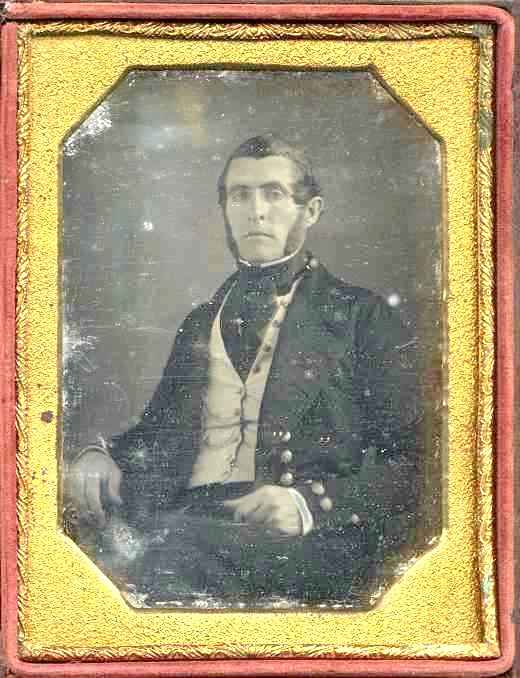![[Aztec Club Logo]](Aztec7.gif)
| American Forces |
|
| Mexican Forces |
|
| Main Menu |

The U. S. Navy's 1841 uniform regulations were still in place during the Mexican War, having been modified in the mid-1840s and again in 1847 to expand recognition of commissioned officers. These regulations were the first to include the dress of enlisted personnel. The regulations stated:
Midshipmen wore a double-breasted coat with a rolling collar -- the undress of passed midshipmen -- and with an anchor of buff cloth inserted in either side of the collar.
As had been true for many years, the regulations of 1841 ran consistent to the nine-button arrangement for senior commissioned officers, and to the four-button pattern for the sleeves and pockets of captains, with three buttons for commanders, lieutenants, medical officers, and pursers. At the same time the coats of captains and commanders had become plain without lace or embroidery, those of medical officers had grown more elaborate. The border of leaves and acorns specified for full dress in 1830 had been retained, but the device of 1832, the branch of live oak, was omitted. The band of embroidery was removed from the cuffs of surgeons. Instead, surgeons wore three strips of one-and-one-half-inch gold lace around the cuffs, the three buttons being between the upper two strips. Passed assistant surgeons had two strips of similar lace, and assistants, one. To those not familiar with the regulations, the well-laced surgeon might appear to be the most senior officer of the United States Navy. His cuffs showed lace, while those of a captain were plain. In most countries, rank was judged by the amount of lace or embroidery: the more the higher the rank. Pursers (officers who paid and fed the crews, and procured clothing and supplies) retained the same embroidery as authorized in 1830, except that the device of the Purser Department, the cornucopia, was replaced by a strip of live-oak leaves and acorns of the same pattern as that around the full-dress collar. With the regulations of 1841, chaplains were finally permitted to wear a naval uniform: the undress coat of a lieutenant, with a black felt collar and cuffs. Chaplains had finally received recognition as commissioned officers, with the double-breasted coat containing nine Navy buttons in each row and three on the cuffs and under the pocket flaps. Professors of Mathematics and secretaries to commanders of fleets and squadrons were also ranked as officers. A secretary was directed to wear a double-breasted, rolling-collared, undress coat of a lieutenant, with two rows of nine buttons each, but with none on the cuffs. Professors and clerks wore the same coats as secretaries, but with only seven buttons in a row.
This daguerreotype shows a Navy Master. Masters wore for dress the undress coat of the senior officers. On the collar were two loops of gold lace, each four and one-half inches long, with a button in each loop. Second masters wore the same coat, but with a single loop and button. The undress coat for all officers entitled to wear the standing-collar full-dress coat was of dark blue, lined with the same, and with a rolling collar. The number and location of buttons was the same as in full dress. |
|
Next Page | Return to Main Menu webmaster@aztecclub.com Page Last Modified: 26 August 2000
Copyright Notice Copyright © 2006, 2012. All Rights Reserved.
|



